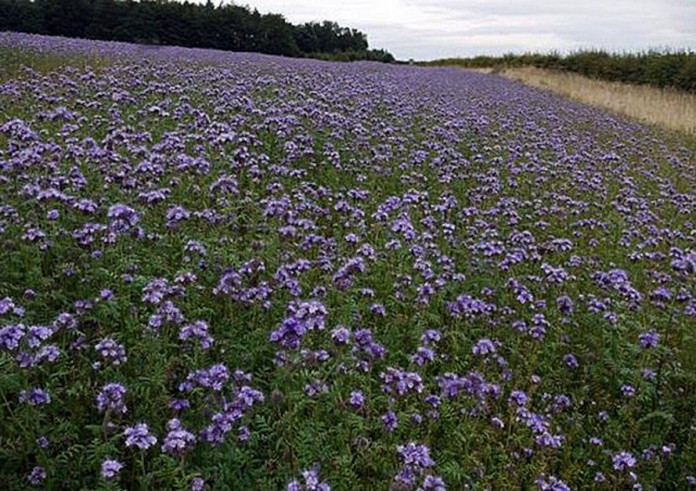
UNIVERSITY PARK, Pa. — Planting cover crops in rotation between cash crops — widely agreed to be ecologically beneficial — is even more valuable than previously thought.
According to a team of from Penn State’s College of Agricultural Sciences, benefits offered by cover crops cross more than 10 ecosystem services.
“As society places increasing demands on agricultural land beyond food production to include ecosystem services, we needed a new way to evaluate ‘success’ in agriculture,” said Jason Kaye, professor of biogeochemistry and research team member.
“This research presents a framework for considering a suite of ecosystem services that could be derived from agricultural land, and how cover crops affect that suite of services.
Cover cropping is one of the most rapidly growing soil and water conservation strategies.
“Our analysis shows how the effort to improve water quality with cover crops will affect other ecosystem services that we expect from agricultural land,” Kaye added.
Multiple gains
The Penn State research quantified the benefits offered by cover crops across more than 10 ecosystem services.
Benefits included increased carbon and nitrogen in soils, erosion prevention, more mycorrhizal colonization — beneficial soil fungus that helps plants absorb nutrients — and weed suppression.
Lead researcher Meagan Schipanski explained that commonly used measurements of ecosystem services can be misleading due to the episodic nature of some services and the time sensitivity of management windows.
“For example, nutrient-retention benefits occur primarily during cover crop growth, weed-suppression benefits occur during cash-crop growth through a cover crop legacy effect, and soil-carbon benefits accrue slowly over decades,” she said.
“By integrating a suite of ecosystem services into a unified analytical framework, we highlighted the potential for cover crops to influence a wide array of ecosystem services.”
Researchers estimated that cover crops increased eight of 11 ecosystem services.
Trade-offs
Trade-offs occurred between economic metrics and environmental benefits, said Schipanski, who was a postdoctoral scholar at Penn State when she led the cover crop study.
Now an assistant professor in the department of soil and crop sciences at Colorado State University, she noted that the planting of cover crops will become more attractive if fertilizer prices rise or if modest cost-sharing programs like the one currently in place in Maryland are developed.
Researchers simulated a three-year, soybean-wheat-corn rotation with and without cover crops in central Pennsylvania. The cover crop rotation included red clover, frost-seeded into winter wheat in March, and winter rye, planted after corn was harvested in the fall.
The research, funded by the U.S. Department of Agriculture, used simulated management practices, including tillage, synthetic fertilizer use and mechanical weed control.
Pencil it out
But many farmers have not planted cover crops because they have not seen financial incentives to do so, according to Kaye.
That is largely because the traditional method of calculating the economic value of cover crops used by agricultural producers — only estimating the resulting increase to cash-crop yields over a short period — was not compelling.
“The most common metrics for evaluating cropping systems are grain and forage yields and short-term profitability,” he said. “Within this context, cover crops are treated as a tool to be used only if they do not interfere with cash-crop production.”
Benefits of cover crops
- The planting of cover crops is accepted as an environmentally prudent practice. In fact, the National Resource Conservation Service recently set a goal to increase the acres planted nationally in cover crops from the current 2 million to 20 million by 2020.
- According to NRCS, in 2006 only 5 percent of cropped acres in the Chesapeake Bay region had cover crops planted every year, and 88 percent of acres never had any cover crops planted.
- In 2011, 52 percent of acres had cover crops planted at least once every four years, and 18 percent of acres had cover crops planted every year.
- The NRCS estimated that the increased annual use of cover crops in 2011 led to an average 78 percent reduction in sediment loss, 35 percent less nitrogen surface loss, a 40 percent cut in nitrogen subsurface loss, and a 30 percent decrease in total phosphorus loss.
STAY INFORMED. SIGN UP!
Up-to-date agriculture news in your inbox!











I can’t find a document where “the National Resource Conservation Service …[sets] a goal to increase the acres planted nationally in cover crops from the current 2 million to 20 million by 2020. Can you provide a link or reference?
Randy, The 2020 initiative was announced at the National Conference On Cover Crops And Soil Health in February. I couldn’t find a specific report, but did find a .pdf of the presentation by Wayne Honeycutt, deputy chief for science and technology at the USDA-NRCS, at that conference, and a .pdf of a related presentation that mentions the National Cover Crop Campaign and the 2020 goal. You can also watch the opening session of the conference, which includes remarks by NRCS Chief Jason Weller: http://www.sare.org/Events/National-Conference-on-Cover-Crops-and-Soil-Health/Broadcast-of-Opening-Sessions. Hope this helps.